
- The Architectural Genius of Gaudí: A Deep Dive into Casa Batlló and Casa Milà
- Exploring the Unique Features of Casa Batlló: A Gaudí Masterpiece
- Casa Milà: The Symbolism and Innovation Behind Gaudí's Iconic Design
- A Closer Look at the Colors and Textures in Gaudí's Buildings
- Why Casa Batlló and Casa Milà are Must-See Attractions in Barcelona
- Understanding the Cultural Impact of Gaudí's Architecture in Modern Barcelona
Antoni Gaudí, a master of architectural innovation, left an indelible mark on the city of Barcelona with his unique and imaginative designs. Among his most celebrated works are the Casa Batlló and Casa Milà, which showcase his distinctive style and deep connection to nature.
These two iconic structures not only embody the essence of Gaudí's creativity but also serve as prime examples of Catalan Modernism. In exploring Gaudí's Famous Barcelona Buildings: Casa Batlló & Casa Milà, one can appreciate the intricate details and vibrant colors that define these architectural masterpieces.
The Architectural Genius of Gaudí: A Deep Dive into Casa Batlló and Casa Milà
Delving into the architectural genius of Antoni Gaudí reveals a world where form and function intertwine seamlessly. Casa Batlló, often referred to as the "House of Bones," showcases a facade that seems to undulate, simulating the movements of the sea. The organic shapes and playful colors not only captivate the eye but also reflect Gaudí's profound respect for nature. His innovative use of light and space inside the building creates an enchanting atmosphere that transports visitors into a dreamlike realm.
In contrast, Casa Milà, known as La Pedrera, stands as a testament to Gaudí's bold vision. Its sinuous stone exterior and wrought-iron balconies are redefining architectural norms of the time. Gaudí designed Casa Milà without a single straight line, creating a structure that feels alive and dynamic. The rooftop, with its sculptural chimneys, offers a breathtaking view of the city and exemplifies his commitment to integrating architecture with the surrounding environment.
- Casa Batlló: Features a wave-like facade, colorful mosaics, and a rooftop resembling a dragon's back.
- Casa Milà: Characterized by its stone facade, organic shapes, and an innovative open floor plan.
- Architectural Influence: Both buildings are pivotal in the Catalan Modernism movement, showcasing Gaudí’s unique approach to design.
Overall, Gaudí's architectural masterpieces, Casa Batlló and Casa Milà, not only highlight his unmatched creativity but also invite us to explore the relationship between architecture and the natural world. As visitors walk through these iconic structures, they experience firsthand how Gaudí's vision transcends conventional design, making both buildings enduring symbols of innovation and artistry in Barcelona.
Exploring the Unique Features of Casa Batlló: A Gaudí Masterpiece
Exploring Casa Batlló reveals a true masterpiece of architecture that stands out for its whimsical design and vibrant colors. The building’s facade, adorned with undulating forms and a mosaic of broken ceramic tiles, creates an impression of movement reminiscent of the sea. This organic approach not only captivates the eye but also embodies Gaudí's deep connection with nature, making it a unique landmark in Barcelona.
Inside Casa Batlló, visitors are greeted by an array of innovative features that reflect Gaudí's genius. The spacious interiors are designed with flowing lines, avoiding straight angles and emphasizing a natural flow that enhances the overall experience. Noteworthy elements include:
- Skylights that allow natural light to flood the spaces, creating a warm and inviting atmosphere.
- Custom furniture that integrates seamlessly with the architecture, further emphasizing the unity of design.
- Organic shapes in the windows and doors that mimic nature, reinforcing the building's theme of harmony with the environment.
The rooftop of Casa Batlló is another highlight, featuring a stunning dragon-like design with colorful tiles that shimmer in the sunlight. This unique rooftop not only serves as a striking visual element but also showcases Gaudí's ability to blend functionality with artistic expression. The chimneys, resembling warriors guarding the structure, further enhance the fantastical narrative that the building conveys.
Ultimately, Casa Batlló is more than just an architectural wonder; it is a celebration of Catalan Modernism that invites visitors to immerse themselves in a world where art and architecture coexist. Gaudí's innovative spirit shines through every corner, making this building a must-see for anyone exploring the beauty of Barcelona.
Casa Milà: The Symbolism and Innovation Behind Gaudí's Iconic Design
Casa Milà, also known as La Pedrera, stands as a testament to Gaudí's innovative spirit and symbolic representation of nature's forms. The building's flowing, undulating stone facade evokes the image of a natural landscape, reflecting Gaudí's belief that architecture should harmonize with its surroundings. This approach not only redefined architectural aesthetics but also challenged conventional building techniques of the early 20th century.
The rooftop of Casa Milà is particularly noteworthy, adorned with fantastically shaped chimneys that resemble warriors. These sculptural elements are not merely decorative; they serve a functional purpose by enhancing ventilation. This blend of art and utility exemplifies Gaudí's commitment to integrating innovation with natural symbolism in his designs.
- Curvilinear Shapes: Casa Milà is characterized by its absence of straight lines, emphasizing a dynamic and organic aesthetic.
- Natural Ventilation: The unique design facilitates airflow throughout the building, showcasing Gaudí's foresight in sustainable architecture.
- Symbolism of Waves: The facade's rippling patterns symbolize the movement of water, reinforcing the connection between architecture and the natural world.
Furthermore, Casa Milà's open floor plan was revolutionary for its time, allowing for versatile living spaces that adapt to the needs of its inhabitants. This innovative design approach illustrates Gaudí's forward-thinking vision and his understanding of modern living, making Casa Milà a landmark of architectural ingenuity and a profound statement on the relationship between nature and urban life.
A Closer Look at the Colors and Textures in Gaudí's Buildings
In Antoni Gaudí's architectural masterpieces, the use of colors and textures plays a crucial role in creating an immersive experience. At Casa Batlló, the vibrant hues of blue, green, and violet are not mere embellishments; they evoke the essence of the sea, inviting visitors to feel as if they are submerged in a wave of color. These shades are complemented by the building's textured surfaces, where smooth and rough elements interact, reflecting light in fascinating ways.
Similarly, Casa Milà showcases Gaudí's mastery of natural materials and organic forms. The facade, constructed from limestone, features a variety of textures that mimic the ruggedness of nature. This deliberate choice highlights the building's connection to the earth, while the soft, flowing lines create a visual harmony that captivates the observer. The play of light and shadow across the surface further enhances the overall aesthetic, making the structure appear alive.
- Color Palette: Gaudí employed a spectrum of colors, using natural pigments for a harmonious blend with the environment.
- Textural Contrast: The interplay between smooth tiles and rough stone highlights Gaudí's innovative approach to materiality.
- Natural Inspiration: Both buildings reflect the colors and forms found in nature, reinforcing the idea of architecture as an extension of the landscape.
In essence, the colors and textures in Gaudí's buildings are not just decorative; they serve to convey deeper meanings and evoke emotions. By integrating these elements, Gaudí created architectural experiences that resonate with the viewer, inviting them to explore the interconnectedness of art, nature, and form within the vibrant city of Barcelona.
Why Casa Batlló and Casa Milà are Must-See Attractions in Barcelona
Casa Batlló and Casa Milà are essential stops on any Barcelona itinerary due to their stunning architectural features and rich cultural significance. Both buildings are prime examples of Catalan Modernism, showcasing Antoni Gaudí's unique ability to blend art with functionality. Visitors are often captivated by the vibrant colors, organic shapes, and intricate details that not only define these structures but also reflect the natural world.
One of the key reasons to visit Casa Batlló is its imaginative facade, which resembles the undulating waves of the sea. The playful mosaics and unique rooftop design create a whimsical atmosphere that enchants visitors, making one feel immersed in a fantastical underwater world. Meanwhile, Casa Milà offers a contrasting experience with its rugged stone exterior and flowing lines that evoke a sense of natural harmony. This building's rooftop features sculptural chimneys, further highlighting Gaudí's innovative designs that challenge traditional architectural norms.
Moreover, both Casa Batlló and Casa Milà invite visitors to experience the seamless integration of nature and architecture. Gaudí’s use of natural materials and light in these edifices enhances the connection between the buildings and their surroundings. This focus on sustainability and environmental harmony is particularly relevant today, making these attractions not only visually impressive but also thought-provoking.
In summary, the architectural brilliance of Casa Batlló and Casa Milà transcends mere aesthetics. They serve as enduring symbols of Gaudí's revolutionary vision, showcasing the intricate relationship between art, architecture, and the natural environment. A visit to these iconic landmarks is a journey into the heart of Barcelona's cultural heritage and a testament to the timeless appeal of Gaudí's work.
Understanding the Cultural Impact of Gaudí's Architecture in Modern Barcelona
Antoni Gaudí's architectural influence continues to shape the cultural landscape of modern Barcelona, making his works not only significant landmarks but also integral to the city’s identity. The innovative designs of Casa Batlló and Casa Milà resonate deeply with visitors and locals alike, illustrating how art and architecture can reflect societal values and aspirations. Gaudí's approach encourages a harmonious dialogue between urban life and nature, setting a precedent for future generations of architects.
The cultural impact of Gaudí's buildings can be seen through various dimensions, including:
- Tourism Growth: Attracting millions of visitors annually, Gaudí’s works significantly contribute to Barcelona’s economy.
- Artistic Inspiration: His unique style has inspired countless artists and architects, fostering a new wave of creative expression that embraces organic forms.
- Sustainability Awareness: Gaudí's emphasis on natural materials and environmental integration has sparked conversations about sustainable architecture in the modern era.
Furthermore, Gaudí's architecture invites ongoing discussions about cultural heritage and preservation. His buildings are not merely structures; they serve as symbols of Catalonia’s rich history and artistic tradition. As Barcelona continues to evolve, the preservation of Gaudí's legacy remains vital for maintaining the city's cultural integrity and inspiring future generations to appreciate the beauty of architecture that honors the natural world.
In conclusion, the enduring impact of Gaudí’s architectural masterpieces transcends time and space, making them fundamental to the narrative of Barcelona. By blending aesthetic innovation with a profound respect for nature, Casa Batlló and Casa Milà stand as testaments to the transformative power of architecture, encouraging a collective appreciation of both art and the environment.
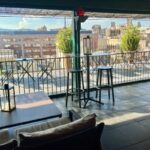 Camper Barcelona Hotel
Camper Barcelona Hotel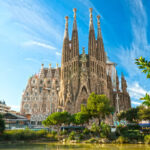 Visit Sagrada Familia's official site for history, tickets, tours, and construction updates.
Visit Sagrada Familia's official site for history, tickets, tours, and construction updates.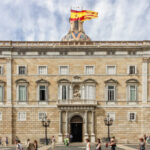 Palau de la Generalitat: Historic Beauty & Views
Palau de la Generalitat: Historic Beauty & Views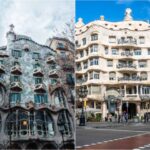 Comparing Casa Batlló and Casa Milà: Reddit Users' Opinions
Comparing Casa Batlló and Casa Milà: Reddit Users' OpinionsIf you want to know other articles similar to Gaudí's Famous Barcelona Buildings: Casa Batlló & Casa Milà you can visit the category WHERE YOU CAN GO.
Deja una respuesta

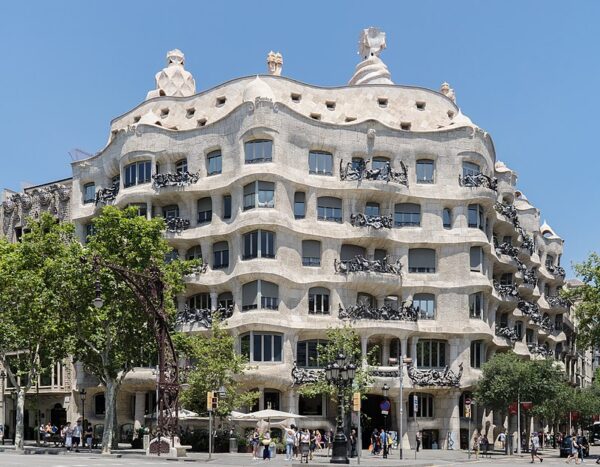








Read more!